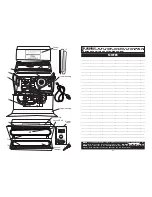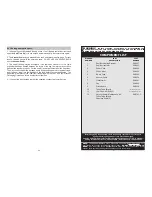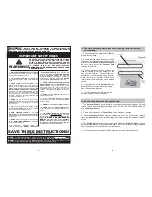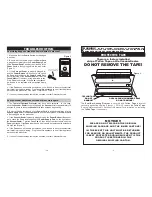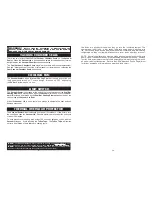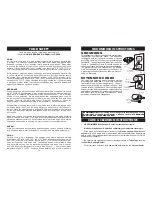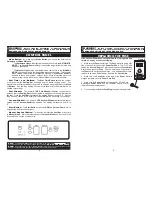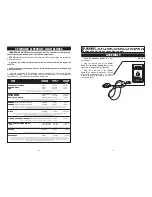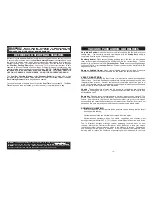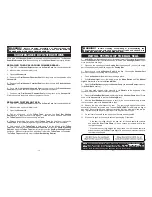
-6-
-19-
VACUUM CHAMBER SEALS
There are two factory-installed
Oval Vacuum Chamber Seals
on the
Vacuum
Sealer
. When the
Vacuum Lid
is closed and downward force applied, they form an
airtight seal so the
Vacuum Chamber
can be evacuated.
The
Oval Vacuum Chamber Seals
may wear over time and require replacement.
See the
“Maintenance Kit”
section of this manual for information on replacing the
Oval Vacuum Chamber Seals
, if necessary.
COOLING FAN
The
Vacuum Sealer
has an
Internal Cooling Fan
that runs whenever the unit
is plugged in and turned on. To save energy, turn the unit “OFF” and unplug
the
Power Cord
when not in use.
THERMAL OVERLOAD PROTECTOR
The
Vacuum Sealer
will automatically shut down if it overheats. If this occurs, turn
the unit off and open the
Vacuum Lid
. Resume normal operation after the unit cools
or about 20 minutes.
To help prevent overheating, wait at least 20 seconds between cycles with the
Vacuum Lid
open. Avoid touching the
Teflon Tape
. The
Teflon Tape
will remain
hot for a brief period of time after each sealing cycle.
LIMIT SWITCH
The
Vacuum Sealer
is equipped with a switch to prevent actuation of the
Seal Bar
Heating Element
in manual mode when the
Vacuum Lid
is open. When the
Vacu-
um Lid
is closed, heat made by the
Seal Bar Heating Element
is absorbed by the
vacuum bag and
Vacuum Lid Seal
.
When the
Vacuum Lid
is open, there is no means to dissipate the heat and unit
damage may occur.
WARNING!
Before cleaning, assembling or disassembling the
Vacuum Sealer, make sure the Vacuum Sealer is OFF and the PLUG IS
REMOVED FROM THE OUTLET/POWER SOURCE!
NOTE:
The
Vacuum Sealer
is ONLY intended to be used with VACUUM BAGS. For
best results, only use the recommended vacuum bags.
DO NOT USE HOUSEHOLD
BAGS!
Any other uses of the
Vacuum Sealer,
other than the uses described in this
booklet, could potentially damage the appliance and void the warranty!
the foods are already chilled when they go into the insulated hamper. The
hamper won’t chill food - it just keeps food cold when properly packed with
ice. Hot cooked foods should be placed in shallow containers and immediately
refrigerated so they cool rapidly. Make sure to cover foods after they are cool.
NOTE: Special considerations must be made when using venison or other wild
game, since it can become heavily contaminated during field dressing. Venison
is often held at temperatures that could potentially allow bacteria to grow, such
as when it is being transported. Refer to the USDA Meat and Poultry Department
for further questions or information on meat and food safety.


